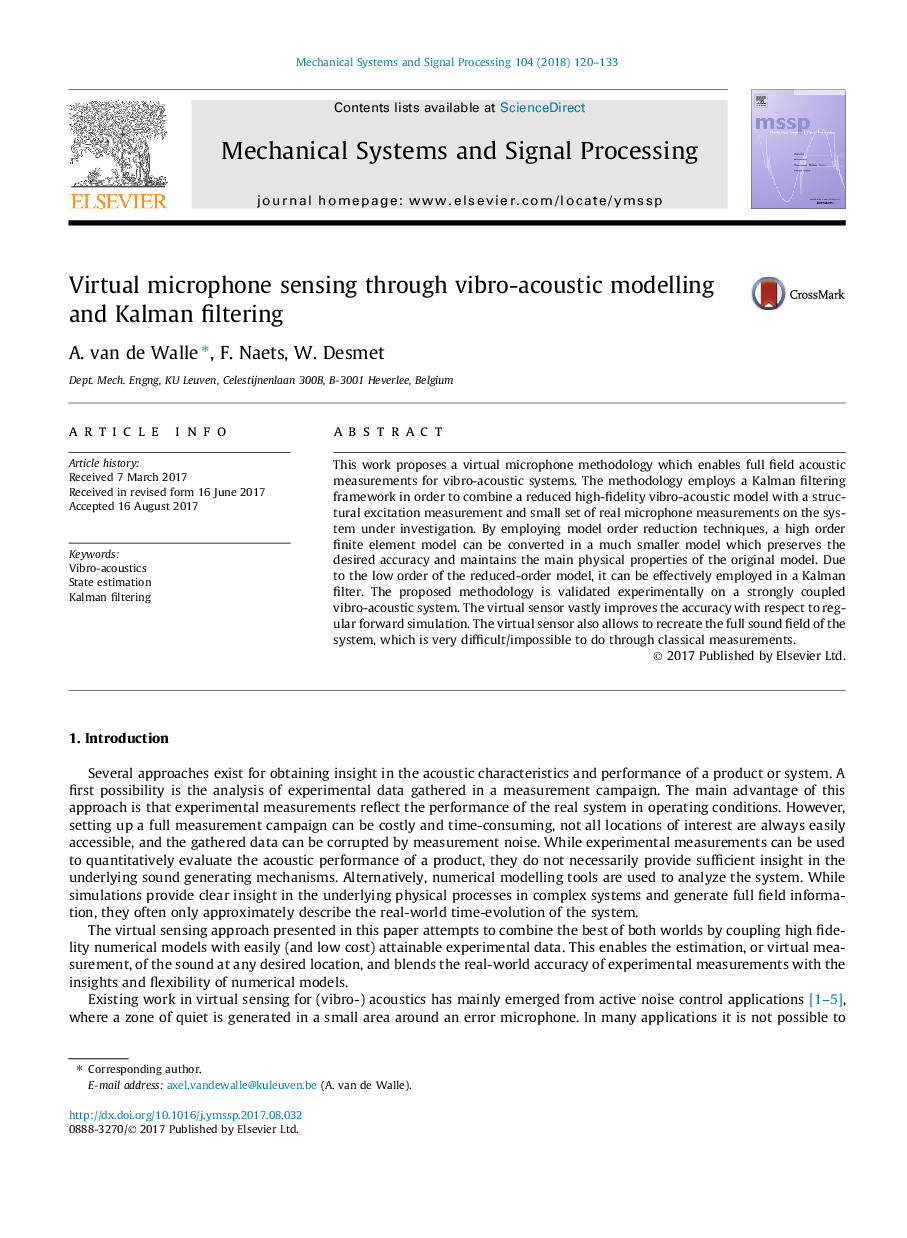ترجمه فارسی عنوان مقاله
سنجش از طریق میکروفون مجازی از طریق مدل سازی واگرا آکوستیک و فیلتر کردن کالمن
عنوان انگلیسی
Virtual microphone sensing through vibro-acoustic modelling and Kalman filtering
| کد مقاله | سال انتشار | تعداد صفحات مقاله انگلیسی |
|---|---|---|
| 82083 | 2018 | 14 صفحه PDF |
منبع

Publisher : Elsevier - Science Direct (الزویر - ساینس دایرکت)
Journal : Mechanical Systems and Signal Processing, Volume 104, 1 May 2018, Pages 120-133
ترجمه کلمات کلیدی
ویبره آکوستیک، برآورد دولت، فیلتر کالمن،
کلمات کلیدی انگلیسی
Vibro-acoustics; State estimation; Kalman filtering;
ترجمه چکیده
این کار یک روش میکروفون مجازی را پیشنهاد می کند که امکان سنجی های کامل صوتی میدان را برای سیستم های ارتعاشی آکوستیک فراهم می کند. این روش چارچوب فیلترینگ کالمن را برای ترکیب یک مدل ارتعاشی آکوستیک بالا با وضوح ساختاری با اندازه گیری تحرک ساختاری و مجموعه ای کوچک از اندازه گیری های میکروفون واقعی در سیستم تحت بررسی مورد استفاده قرار می دهد. با استفاده از تکنیک های کاهش سفارشات مدل، یک مدل عنصر محدود از مرتبه بالا می توان در یک مدل بسیار کوچکتر که دقت مورد نظر را حفظ می کند و خواص فیزیکی اصلی مدل اولیه را حفظ می کند، تبدیل می شود. با توجه به نظم کم مدل مدل کاهش یافته، می توان آن را به طور موثر در یک فیلتر کالمن استفاده کرد. روش پیشنهادی بر روی یک سیستم ارتعاشی آکوستیک قوی متصل است. سنسور مجازی به میزان قابل توجهی نسبت به شبیه سازی رو به جلو را بهبود می بخشد. حسگر مجازی نیز اجازه می دهد تا زمینه کامل صدا سیستم را بازسازی کند، که از طریق اندازه گیری های کلاسیک بسیار دشوار / غیرممکن است.

